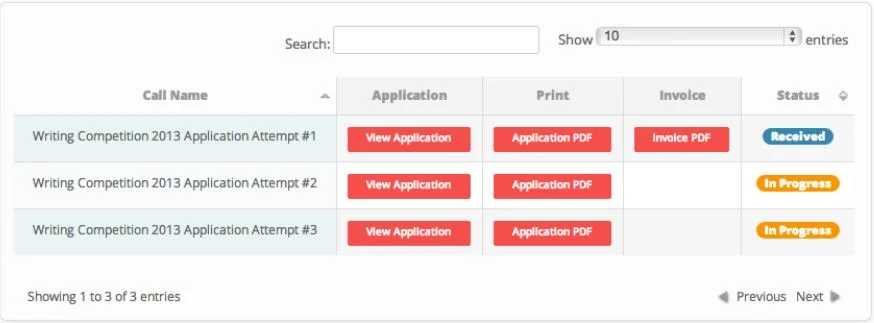Partially because of the pandemic, the world of art and museums is changing with the implementation of new technology and platforms. VOMA, or “Virtual Online Museum of Art,” is the first fully interactive virtual museum. This review discusses its pros and cons in the context of other recently created virtual museums.
Saatchi Art: Rethinking the Relationship Between Artists and Collectors
Saatchi Art is a virtual gallery for both artists and collectors. It hosts a collection of paintings, sculptures, and photographs in a variety of price ranges by artists from all over the world, providing a way for artists to exhibit and sell their work on a mobile platform. Check out the details of this app here.
Saatchi Art: Rethinking the Relationship Between Artists and Collectors
Saatchi Art is a virtual gallery for both artists and collectors. It hosts a collection of paintings, sculptures, and photographs in a variety of price ranges by artists from all over the world, providing a way for artists to exhibit and sell their work on a mobile platform.
NO AD: Street art in the subway
A recent Endgadget article highlights an artistic solution to getting the advertisements out of your way - an app called “NO AD” which digitally replaces advertisements with street art. Intrigued by the concept, and already planning to visit the Big Apple, I seized this opportunity to try it out and share my hands-on impressions.
YouJudgeIt: A Call-for-Entry Management Platform
Calls for entry often require the materials to be evaluated by a jury, and preparing to present those materials to jurors often becomes a time-consuming task for managers. This challenge is where regular online forms fall short and where YouJudgeIt, an adjudication solution by Westaf, provides a good solution.
From App to Art: Poetics
The average smartphone user spends over an hour on his or her device per day. That’s a lot of time to be staring down at one screen. What if there were opportunities for smartphone users to exercise their artistic skills on these devices? What if there was an easier way to create that didn’t involve a paintbrush or a journal
Art Collecting Gone Social with ARTtwo50
As I’m sure you’ve noticed, the advent of digital technologies have radically changed our world. Lately it seems like the process of art collecting finally caught up - Amazon sells original art and services like Gertrude and Art.sy digitize traditional collecting. Perhaps the most innovative and clever of these services is ARTtwo50 - I played with their app over the weekend.
Online Portfolio Management Tool - Works.io
Being an artist or a gallery manager in the 21st century requires an changing degree of technological know-how and engagement -- or so it might seem. In 2008, Technology in the Arts presented some options for free web sites for artists: http://www.technologyinthearts.org/2008/06/free-web-sites-for-artists/. Over the past 5 years things have only gotten easier with html5, ipads, and an ever-growing app market, and artists have more options at their fingertips to create online galleries of their very own. A slick and simple option currently in public beta-test is Works.io.
Learning Made Easy with Painting Portal for iPad
Whether you're someone who just loves to learn or an undergrad trying to absorb all the art history knowledge of all time - have I got a treat for you. I took some time to check out Painting Portal - a helpful compendium of paintings from the iTunes app store.
How Google Art Project Benefits the Public
How many of you have ever imagined being able to see artwork in the greatest museums around the world without leaving your chair? Driven by his passion for art, Amit Sood developed Art Project to let people do just that. The Google Art Project includes various museums from nine different countries, which provides people an access to artworks worldwide. It’s not uncommon, many people and organizations began to think about “online museums” years ago. However, I found two important features, which I rarely notice on other similar websites, that differentiate Google Art Project from others-----the extremely high pixels (10 billion) and the collection button.
image 1
(Image 1)
Some people wondering what could we get from 10 billion pixels? Google Art Project’s pursuit for an extremely high pixel count for each piece ensures audiences have a high level of exploration experience for artworks. For instance, the Harvesters, painted by Pieter Bruegel the Elder in 1565, gives you a general view on the artwork at the first glance (Image 1). Gradually, you will probably be curious about several detailed part of the paintings. What are people doing in the triangle 1 and triangle 2 areas (Image 1)? As you zoom in triangle 1 area, you will clearly see expressions on each person’s face (Image 2). Then you will really want to look deeply. As you start playing around, you will find something going on over there in triangle 2 area. As you zoom into the triangle 2 area, you will find that the artist depicted a scene of kids beating something (Image 3). Apparently, it seems to be a quite popular game. After I did a little research on Google, I found this was a game called score which involves in beating the goose with sticks. You see, I learned something from the exploration process for the painting.
image 2
(Image 2)
(Image 3)
This high standard of pixels also enables people to observe the details about brush strokes and to see how an artist actually creates the masterpiece. As I deeply go to the favorite part of the painting Starry Night painted by Van Gogh. Interestingly, as I zoomed in, the cracks noticed seemly closer the distance between Van Gogh and me. I've never gone into the Starry Night like this before.
Another amazing feature of this project is the collection button. This button enables any one of us to create our own museums online by creating our own collections out of all these images. Moreover, you can introduce your museum to your friends via sending an email and really get a conversation about what your feeling is when going to these masterpieces.
Additionally, we also see some potential values of this project for the arts education field. This could be a great tool for arts teachers to better get to the interpretations of interesting details of the masterpiece in class. For now, the Google Art Project seemingly performs well at a technical level. However, from a management perspective, some people doubt its problematic execution. Another concern is if the implication of Google Art Project is that in the future there will no longer be any need to visit a museum. This is not our focus of this post, but we are curious about your opinion about this project. Leave a comment below!



















